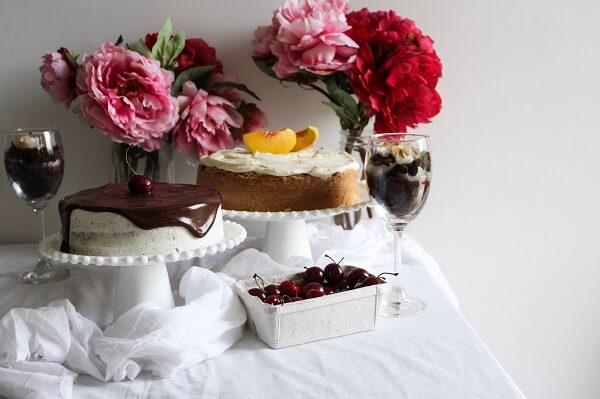Baking is both an art and a science. While creativity plays a big role, precise measurements are the backbone of successful recipes. One of the most common dilemmas for bakers is whether to measure ingredients in cups (volume) or grams (weight). This blog dives deeper into the differences, the pros and cons of each method, and why understanding them is crucial for perfect baked goods.

Why Do Measurements Matter in Baking?
Baking is all about chemistry. The ratio of flour, sugar, fat, and liquid in a recipe determines the texture, flavor, and rise of your baked goods. Even slight variations in measurements can lead to unexpected results, such as dry cakes or dense bread.
Cups: The Volume-Based System
In the U.S., recipes typically call for measurements in cups, tablespoons, and teaspoons. This system measures ingredients by volume rather than weight.
Advantages of Cups
1.Convenience: No special equipment is needed—just a set of measuring cups and spoons.
2.Widely Used: Most American recipes are written in cups, making it easy to follow along.
Challenges of Cups
1.Inaccuracy: The way you scoop ingredients can drastically affect the amount. For example, a packed cup of flour weighs more than a lightly scooped cup.
2.Inconsistency: Ingredients like flour, sugar, and butter have different densities, so volume measurements can vary.
Grams: The Weight-Based System
Grams measure the weight of ingredients using a kitchen scale. This system is common in European recipes and is increasingly popular worldwide.
Advantages of Grams
1.Precision: A gram is a fixed unit, so you’ll get consistent results every time.
2.Ease of Scaling: Doubling or halving a recipe is straightforward when working with weights.
3.Universal: Grams are part of the metric system, making recipes more globally accessible.
Challenges of Grams
1.Requires a Scale: You’ll need a digital kitchen scale, which might not be as readily available as measuring cups.
2.Conversion Effort: If you’re working with a recipe written in cups, you’ll need to convert measurements.
Tips for Accurate Measurements in Both Systems
For Cups:
•Use the “spoon and level” method for dry ingredients.
•Avoid packing flour or sugar unless the recipe specifies.
•For liquids, use a clear measuring cup and check at eye level.

For Grams:
•Always zero out (tare) your scale before adding ingredients.
•Weigh each ingredient separately to avoid errors.
•Use a small scale for lightweight ingredients like salt or spices.

Why Is It Better To Measure Ingredients In Grams?
Here’s why many bakers and professional chefs prefer using grams over cups:
- Accuracy: When you measure ingredients by weight, there is no room for error due to differences in density or how you pack ingredients into a cup. For example, 1 gram of flour is always 1 gram, no matter how you measure it. However, a cup of flour can vary depending on how it’s scooped, sifted, or packed.
- Consistency: Using grams ensures that recipes come out the same way each time. In baking, even a small difference in ingredient amounts can affect the texture and outcome. For instance, too much flour can make dough dry, while too little may result in a runny batter.
- Universal Standard: The metric system, including grams, is used by most of the world, making it easier to share recipes across countries without confusion. A recipe written in grams can be followed in any country with little adjustment.
- No Need for Conversion: When you measure in grams, you’re working directly with the substance’s weight, so you avoid having to adjust for volume. For example, while 1 cup of water weighs about 240 grams, 1 cup of flour weighs only about 120 grams. This difference can lead to errors if you’re not familiar with the correct conversions.
Final Verdict: Cups or Grams?
If you’re a casual baker who enjoys making cookies or muffins occasionally, cups might be sufficient. However, if you want consistent, professional-quality results or frequently try recipes from international sources, grams are the way to go.
Switching to grams may feel like a small adjustment, but it can make a big difference in your baking success.
Happy baking, and may your cakes rise perfectly every time!


 Hello. I'm Shivesh Bhatia, a food blogger and food stylist from Delhi, India. Welcome to Bake With Shivesh, where I'll help you create magic in your kitchens with my simple recipes.
Hello. I'm Shivesh Bhatia, a food blogger and food stylist from Delhi, India. Welcome to Bake With Shivesh, where I'll help you create magic in your kitchens with my simple recipes.
Leave a Reply